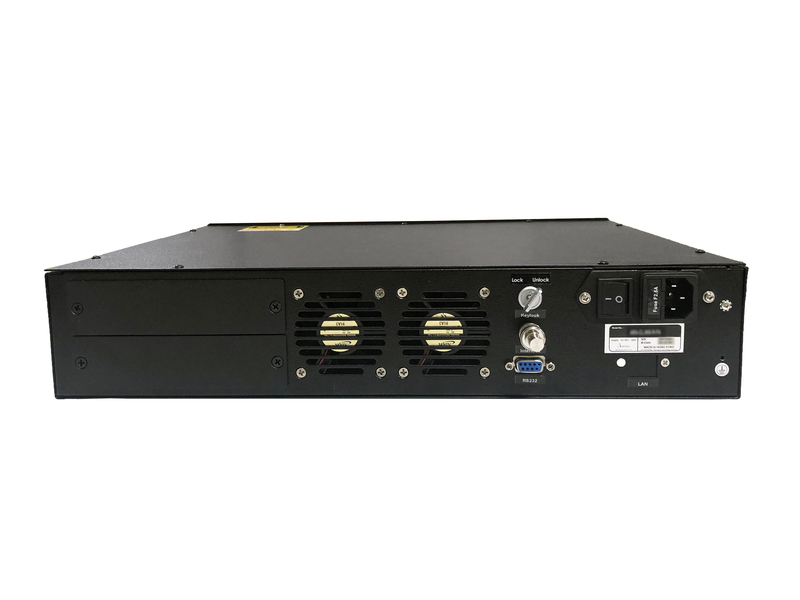O-Band Bismuth-doped Fiber Amplifier (Multi-Channel)





Amonics’ O-band Bismuth-doped fiber amplifier (BDFA) uses bismuth-doped fiber as the gain medium. The multi-channel BDFA features flattened gain across the operating wavelength range and very low noise figure. The silica-based Bismuth-doped fiber offers the similar fundamental advantages as erbium-doped fiber used for amplification in the C and L bands.
The turnkey microprocessor-controlled BDFAs provide illustrative alarms and status indicators. An integrated RS232 computer interface enables easy control, diagnostic functions and data acquisition.
Specifications
| ABDFA-O-S-DWDM-19 | ABDFA-O-L-DWDM-20 | |
|---|---|---|
| Operating Wavelength | 1260 nm to 1340 nm | 1280 nm to 1360 nm |
| Composite Input Power | -30 to 0 dBm | -30 to 0 dBm |
| Composite Output Power @ 0 dBm composite input power | Min. 19 dBm | Min. 20 dBm |
| Noise Figure @ 0 dBm composite input power | Typ. 6.5 dB, Max. 7.0 dB | Typ. 6.5 dB, Max. 7.0 dB |
| Gain Flatness | Max. ±1.5 dB (measured at wavelength range 1270 – 1330 nm) | Max. ±1.5 dB (measured at wavelength range 1310 – 1350 nm) |
| Input / Output Isolation | Min. 30 dB | Min. 30 dB |
| Control Mode | ACC | ACC |
General Parameters
| unit | value | |
|---|---|---|
| Operation Temperature | °C | 0 to 40 |
| Storage Temperature | °C | -10 to 70 |
| Power Supply | VAC | 90 – 240, 47 – 63Hz |
| Dimensions | mm | 2U Half Rack: 200(W) x 376(D) x 88(H) mm; 1U: 485(W) x 360(D) x 45(H) mm; 2U: 485(W) x 360(D) x 90(H) mm |
| Mechanical Safety Control | Key-lock switch, BNC interlock key | |
| Optical Power Monitoring | Output power, Input power (optional) | |
| Remote Control Port | DB-9 female (RS232), Control software included RJ-45 (TCP/IP Ethernet) (optional) | |
| Protection | Pump Power Protection | |
| Optical Connector | FC/APC, FC/UPC, SC/APC, SC/UPC | |
| Optical Fiber | SMF-28 |
Ordering Information
| Product Code |
|---|
| ABDFA-O-S-DWDM-aa-b-cc or ABDFA-O-L-DWDM-aa-b-cc |
| aa : Composite Output Power in dBm |
| b: B for 2U Half Rack, R for 19” Rackmount |
| cc: FA for FC/APC, FC for FC/UPC, SA for SC/APC, SC for SC/UPC |
Applications
Key Features
| High output power |
| Similar gain & noise figure as typical EDFA |
| Lower power consumption compared to conventional Raman amplifier |
| Distortion-free amplification |